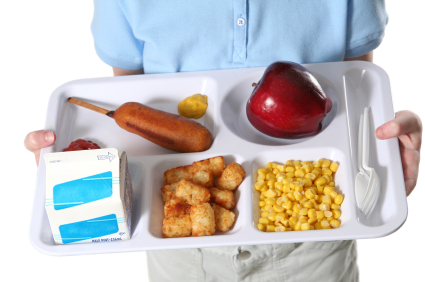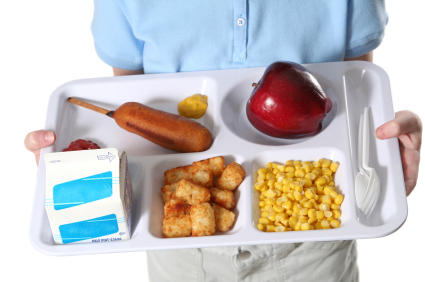 Professional bloggers operate under pressure to produce a high volume of provocative posts. And there’s also the rule (often honored in the breach) that brevity is best–no one wants to slog through a tome on a computer screen.
Professional bloggers operate under pressure to produce a high volume of provocative posts. And there’s also the rule (often honored in the breach) that brevity is best–no one wants to slog through a tome on a computer screen.
Thus we sometimes propound our opinions without taking time to tease out (or think through) nuances. Luckily, we have readers–some of whom have their own blogs–to challenge us. And then we get to think through our opinions in nuanced fashion.
Thus today’s post.
In a Choice Nuggets post yesterday, I gave my quick reaction to a Washington Post piece by Jane Black on school lunches. The article focused on a private company called Revolution Foods that provides healthy, well-sourced lunches to schools for $2.90 to $3.00 per meal–close to the federal reimbursement rate of $2.68. The company provides lunches to 250 schools in California, Colorado, and Washington, D.C., Black reports.
Here’s what i said:
From my perspective, any method for getting decent food into schools deserves praise. But I can’t support a full-on privatization model-if we want a decent society, I think we need to figure out how to make and serve good food in our public schools.
And that was that–onto the next “choice nugget.” But what did I mean? Was I denouncing all private-enterprise methods for getting good food into schools? Rejecting private enterprise altogether? And if I “praised” Revolution Foods for its work, why didn’t I want to see its model replicated wholesale?
Into this forest of ambiguities stepped Zachary Cohen, an occasional blogger and prolific Twitterer.
In a Wednesday blog post, Cohen posed the question: “What the Heck is Wrong with the Local Food Movement.” His answer: me. Based on the above paragraph and a Twitter exchange between us (which he quotes), Cohen concludes that I reject private enterprise–an attitude of which he seeks to purge the sustainable food movement.
Rather than take Cohen on point by point, I’d like to clarify what I meant about the privatization of lunches.
First of all, I’ve got no beef with Revolution Foods or the schools that use its services. School lunches are a full-blown disaster; school cafeterias often have inadequate and/or decaying kitchen equipment–sometimes none at all–and few cafeteria workers are trained cooks. Cafeteria directors are allotted $2.68 per lunch per day–and two-thirds of that goes to labor and other overhead. Thus each lunch represents 90 cents worth of ingredients.
If I ran a school canteen, I’d be sorely tempted to wash my hands of the challenge of feeding kids healthy meals for less than the price of a Big Mac. If a private firm offered well-made lunches with quality ingredients for $2.90 or $3.00 a pop, I might jump.
But I would do so knowing that I was ceding something.
First of all, let’s concede that the school-lunch program has long-since been de facto privatized. Since the 1980s, schools have been responsible for maintaining their own kitchen equipment. To raise funds for that, they’ve invited in a plethora junk-food and soda machines–surrendering snack time to private companies like Coke and Frito Lay.
And then, as kitchen equipment slowly decayed and schools could no longer afford to hire skilled cooks, kitchens increasingly became reheating centers. And what they reheated was pre-made fare churned out by transnational food giants–companies that are expert at profitably transforming cheap commodity ingredients into “food.” Thus we get programs like this one , offered by Tyson Foods (until very recently, the globe’s largest purveyor of industrial meat) to cafeteria directors:
Tyson K12 allows school foodservice directors the opportunity to turn commodities into products that excite kids about lunch in the cafeteria. With indirect sales discounts from Tyson Food Service and the online inventory management system at k12foodservice.com-a K12 Services, Inc. Web site-directors can now make a huge impact on the bottom line of their school foodservice program.
When commodity chicken or beef is diverted to Tyson Food Service, it is stored and converted to products of choice, such as popular Whole Grain Breaded Chunks; new premium Charbroiled Beef Burgers; fully cooked Shaved Steak® beef; or Skillet-Style Ground Beef made with pure ground beef.
Commodity meat transformed by a gigantic industrial-meat processor into “Whole Grain Breaded Chunks”–that’s pretty much the status quo. When I argue against the privatization of school lunches, I’m thinking about a 20-year privatization experiment that has failed abjectly. Efforts like Revolution Foods don’t so much as challenge the status quo as turn it into (well-made, corn-syrup free) lemonade.
I mean, consider what Revolution Foods is up against. Ask any restaurateur or caterer what it takes to put lunch on the table, at a profit, for $3.00 a head. You have to be extremely price-conscious, at every step in the process from ingredient to plate. It’s difficult to see how some key element–quality, working conditions, flavor–doesn’t suffer on such a cut-to-the-bone model. “Good, cheap, fast–choose two,” as the old engineering saying goes.
According to Black, Revolution Foods operates centralized kitchens, from which it distributes thousands of lunches daily, to be heated at the schools. I have no reason to doubt the quality of what Revolution produces, but that already seems like a major quality concession here. The commissary-to-consumption scheme is essentially the airplane model of food service. Another notorious example is Starbucks and its gross little breakfast sandwiches. Revolution may know how to make it work, but is this really the model of lunch we want to teach children?
At a time when relatively few kids have parents who regularly cook at home, isn’t showing the a a bustling open kitchen full of people cooking an important educational tool?
Moreover, as Black reports, even with its low prices and despite its best efforts, Revolution Foods remains out of the price range of most public schools. They simply can’t afford to the premium, and there’s always Tyson Foods, beckoning with its cheap “chunks.”
While exploring short-term solutions like Revolution Foods, school-lunch advocates also need to look at long-term solutions that give lunch the place it deserves in schools. And that means increasing the miserly outlay for lunches, and reinvesting in actual kitchens.
And while keeping the outlay anywhere close to $2.68 per day is a recipe for disaster, a decent school lunch program need not be a spendthrift’s nightmare. Indeed, Revolution Foods shows a path forward. Admirably, Revolution focuses on high-quality ingredients: no trans fats or high-fructose corn syrup, milk free of synthetic growth hormones, etc. According to Black, Revolution Foods preserves quality by buying in bulk and wrangling deals with local suppliers.
What if every school district’s cafeteria director were charged with doing the same? An entire school district would have considerable buying power, and no doubt be able to shave a few percentage points off of wholesale prices. They could negotiate straight with farmer’s coops for a year’s supply of apples or grass-fed beef, or whatever regionally appropriate staples.
We need plenty of private enterprise in the food system. We don’t need the government running restaurants, or monopolizing liquor/wine sales, or growing veggies. A healthy food system is composed of a variety of small, interlinked businesses that are grounded in communities. But school lunches are a classic example of market failure. Remember, the government got into the game in the first place for lack of healthy bodies to fight wars. Companies like Revolution Foods have their place–but in a privatized system that values cheapness over other factors, they’ll always be a niche in a world dominated by Tyson and its ilk. Let’s invest in the health of our kids, and not outsource their lunches to the lowest bidder.


